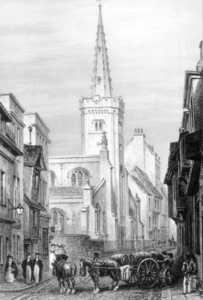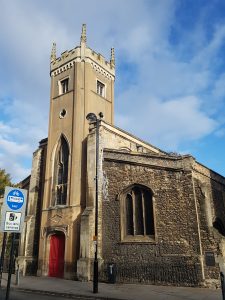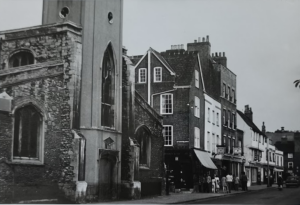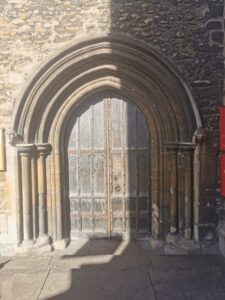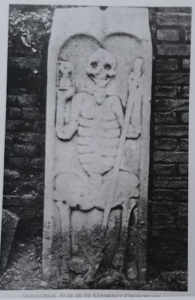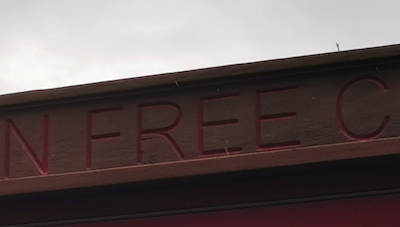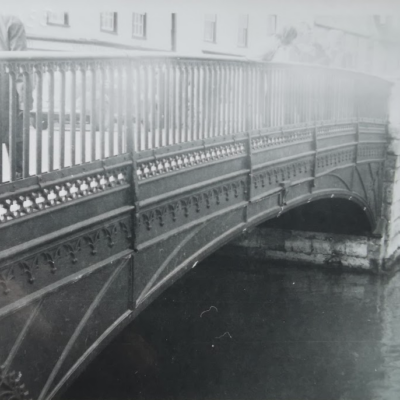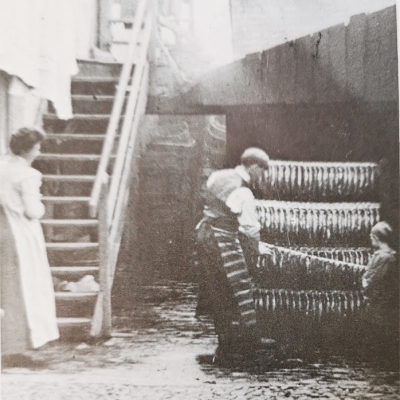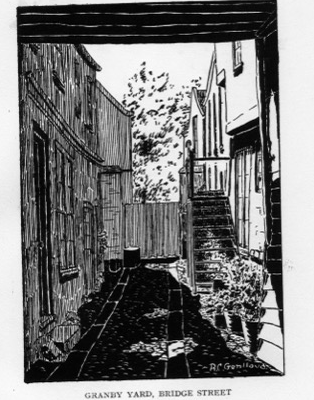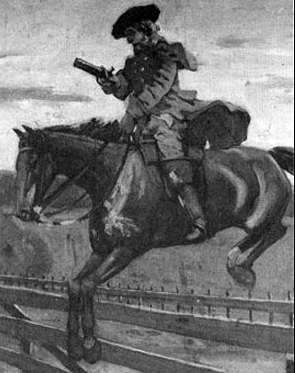Search by topic
- archaeology
- architecture
- bricklayer
- Building of Local Interest
- carpenter
- church
- crime
- dressmaker
- fire
- Great Eastern Railway
- listed building
- medieval
- oral history
- Public House
- Rattee & Kett
- Religious House
- Roman
- scholar
- school
- Then and Now
- tudor
- women
- work
- world war one
- world war two
Search by text
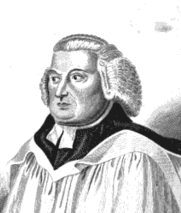 Reverend William Cole
Reverend William ColeSt Clement
History of St Clement, Cambridge
The church is essentially a 13th century structure but dominated by a tower dating from 1821-2 described by Pevsner as ‘somewhat silly.’
Further information can be found on Wikipedia.
Carved above the west door of the tower are the words “Deum Cole’, the punning motto of the county antiquary, Rev William Cole (1714-1782). He left a collection of 100 folio volumes to the British Museum, a mine of information about Cambridgeshire.
Cole’s intention was that the tower and spire should be built over the graves of his two sisters and appointed James Essex, one of his executors, to undertake the work. Essex died soon after Cole and it was not until 40 years later, 1821, that the steeple was built, and then in total disregard of the benefactor’s wishes.
Cambridge Inscriptions Explained by Nancy Gregory (2006) looks at the background to the inscription in more detail:
DEUM COLE
Worship God
Cambridge Chronicle 8.3.1822 included the following little verse:
Since to Old Cole (Heaven rest his soul,
Who lov’d God’s worship holy;)
This spire we owe, we’ve plac’d below
His motto “Deum Cole”.
William Cole is buried under the tower.
Contribute
Do you have any information about the people or places in this article? If so, then please let us know using the Contact page or by emailing capturingcambridge@
License
This work is licensed under CC BY-NC-SA 4.0








